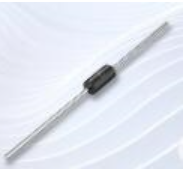Date:2025-07-10 Categories:Product knowledge Hits:430 From:Guangdong Youfeng Microelectronics Co., Ltd
3、 Working principle:
The working principle of transient suppression diodes is based on the Zener effect and breakdown effect. When the voltage is within the forward operating range, its behavior is similar to that of a regular diode. But when the voltage exceeds its threshold voltage (usually referred to as breakdown voltage), the transient suppression diode will automatically conduct, forming a low resistance path to conduct the overvoltage to ground or other grounding points.
Within the normal operating range, the transient suppression diode is in a high impedance state and only conducts when the voltage exceeds a specific threshold. Once conductive, its resistance value will rapidly decrease to an extremely low level in order to quickly absorb overvoltage and guide it to ground. When the overvoltage disappears, the transient suppression diode will automatically return to a high resistance state and wait for the next overvoltage event.
4、 Specifications:
The specifications of transient suppression diode mainly include:
1. Rated Standoff Voltage: The rated breakdown voltage of a transient suppression diode refers to the maximum forward voltage it can withstand. This value is usually given in the data manual.
2. Peak Pulse Current Rating: The maximum pulse current that a transient suppression diode can withstand, typically measured in amperes (A). This value is used to evaluate the operational capability of the diode during breakdown.
3. Peak Pulse Power Dissection: The maximum pulse power that a transient suppression diode can withstand, typically measured in watts (W). This value is used to evaluate the energy absorption capacity of the diode during breakdown.

Previous: Classification, Structure, and Principle of MOSFET